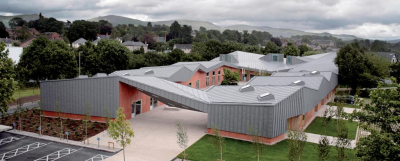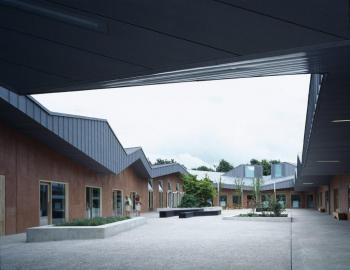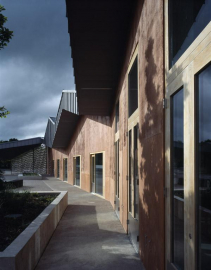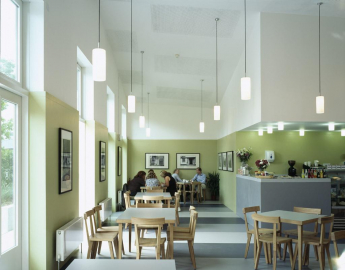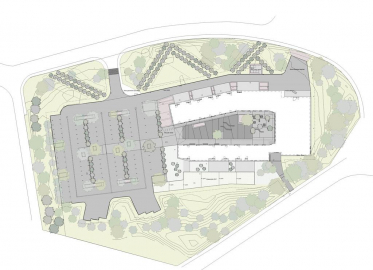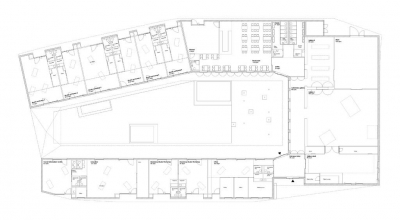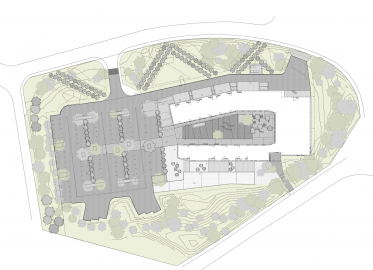Ruthin Craft Centre
The Ruthin Craft Centre is both an internationally renowned venue for contemporary crafts and an important focus of educational and leisure activities for the local community. The design concept worked with and enhanced the essential characteristics of the former building, its courtyard typology and its relationship with the surrounding landscape. The external form of the building is a complex composition of sloping roofs, which shift in plan and section, quietly reminiscent of the Clywdian range above the site. Zinc panels of varying width wrap over roof and wall, with weave-like seam arrangements. The concrete walls, cast on the ground and then tilted up into place, are pigmented to give a clay-red hue, referencing the local red sandstone used on civic buildings nearby.
There are three gallery spaces, arranged to allow a variety of routes and sequences to suit the requirements and ambitions of each exhibition. The retail gallery is accessed from the main entrance and has large windows, making it visible from the outside. The restaurant is located on the northern side of the courtyard with a south-facing terrace and, next to it, six workshop studios are arranged in a row with service entrances on the north side and shopfront entrances from the courtyard. The education room, two studios for artists in residence, the Tourist Information Centre and the administration areas are located on the southern side with entry and views into the courtyard.
The courtyard creates is an important transitional space connecting the restaurant, education facilities, workshops, studios and entrance hall that open directly onto it and provides a new and lively communal space for the local community.
Key environmental features:
The building was designed to be naturally ventilated: windows and rooflights allow cross-flow ventilation even in the larger, deep plan
gallery spaces while maintaining security and weather tightness. Objects requiring specific temperature and humidity control are displayed in climate-controlled cases to avoid air-conditioning the entire gallery volume. The walls and floors of the building are made of concrete, which is exposed on the inside of many rooms, allowing it to absorb and release heat during a typical day. This thermal mass results in the building responding more slowly to changes in outside temperatures, reducing the energy needed to maintain comfortable indoor temperatures.
The selective glazing in the external walls minimises winter heat loss and summer heat gain. Rooflights are used extensively to ensure good internal daylight levels and reduce reliance on electric lighting. Generous insulation levels further reduce year-round energy needs. On the southern side, the studio workshops have taller elevations to benefit from winter sun and reduce heating needs, while roof overhangs are smaller, to improve solar access. The gallery spaces, which are generally more densely occupied and have heat generating display lighting, need less solar energy and therefore have no windows on their southern side, as light is provided by the north facing rooflights.

